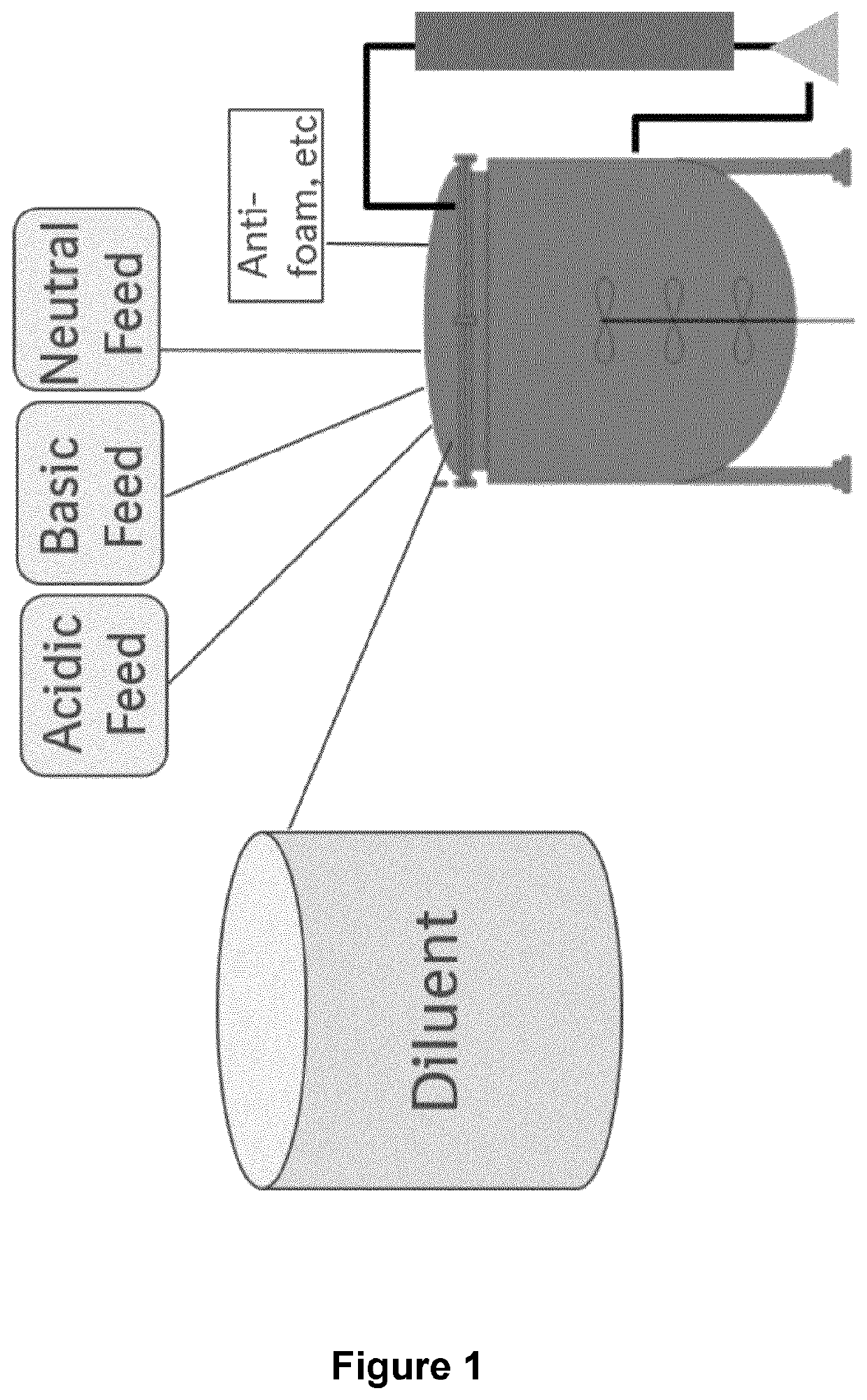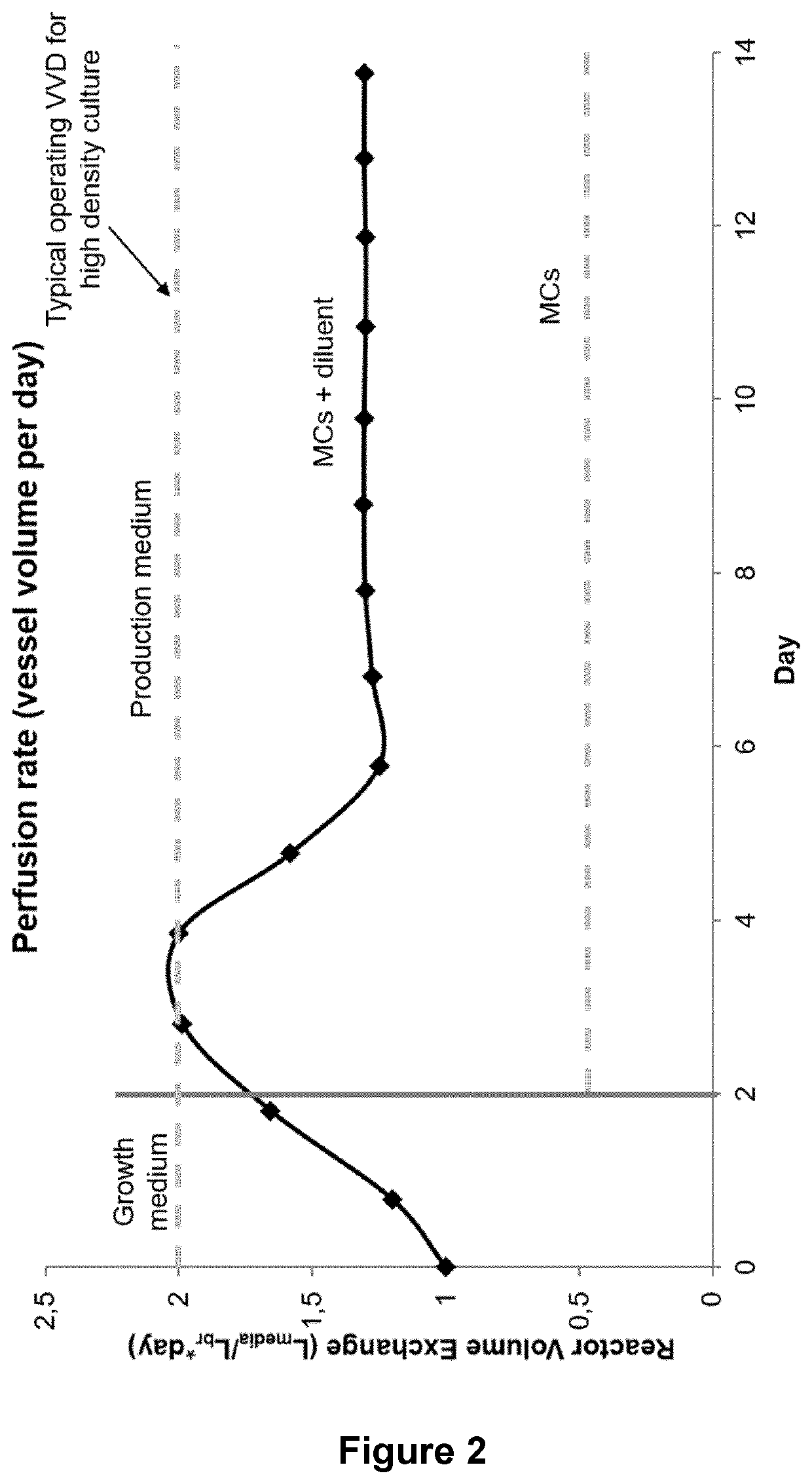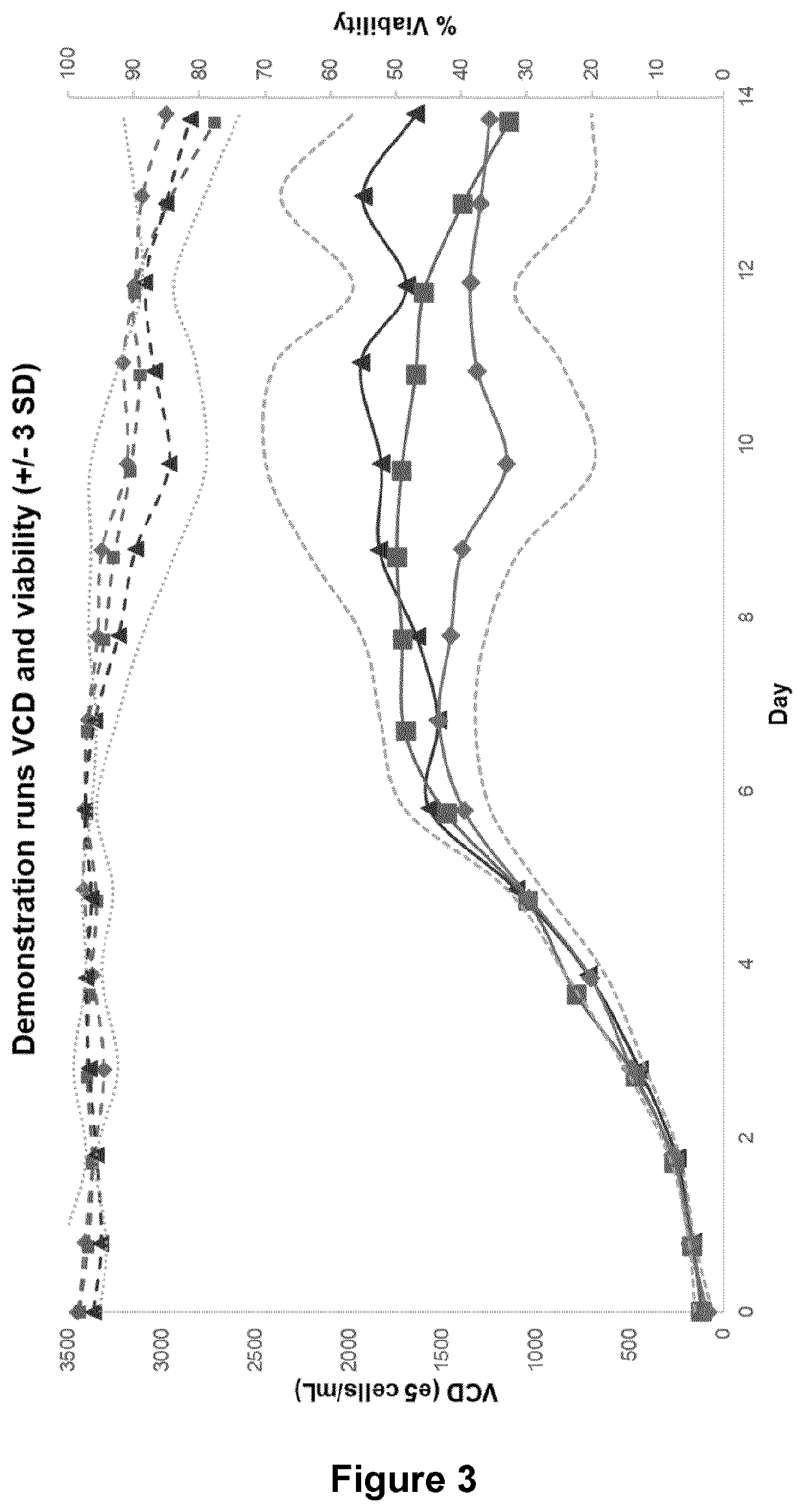Concentrated perfusion medium
a perfusion medium and concentrate technology, applied in the field of serum-free cell culture perfusion medium, can solve the problems of logistically difficult, if not impossible, and the volume of media required to sustain perfusion rate of 1-3 vessel volumes per day (vvd) becomes unsuitable for direct addition to cell culture,
- Summary
- Abstract
- Description
- Claims
- Application Information
AI Technical Summary
Benefits of technology
Problems solved by technology
Method used
Image
Examples
example 1
[0229]After inoculation on day 0, perfusion was started immediately using proprietary growth medium at a rate of 1 vvd. The perfusion rate was increased by 0.5 vvd each day until day 2 when 2.0 vvd was reached. Bioreactor working volume was maintained by controlling media addition via bioreactor weight. On day 2, the concentrated media feeds and diluent replaced the growth medium to start the “production phase,” that is, when the culture reached 0.2 gram / Lbr / day of product in the permeate and loading of the capture columns began. The concentrated feeds were fed at a constant total of 0.5 vvd (acidic feed at 0.33 vvd, basic and neutral feeds at 0.08 vvd each) during the production phase. The rate of feeds was calculated so that the proportions of the nutrients in each feed were kept the same as compared to the intact 1× formulation at 2 vvd using the following equations:
[1x]*2vvd=[6x]*X vvd (eq.1)
[0230]where X is the perfusion rate in vvd of the acidic feed necessary to maintain the...
example 2
[0235]Three CHO cell lines A (⋄), B (□), and C (Δ) (see FIGS. 9 to 14) expressing different recombinant IgG molecules were cultured in a 2 L bioreactor. After inoculation on day 0, perfusion was started immediately using proprietary growth medium at a rate of 1 vvd. The perfusion rate was increased by 0.5 vvd each day until day 2 when 2.0 vvd was reached. Bioreactor working volume was maintained by controlling media addition via bioreactor weight. On day 2, the concentrated media feeds and diluent replaced the growth medium to start the “production phase,” that is, when the culture reached 0.2 gram / Lbr / day of product in the permeate and loading of the capture columns began. The cells were fed with a constant volume of about 2 vvd with varying proportions of the three concentrated media feeds and sterile water diluents. The rate of feeds was calculated so that the proportions of the nutrients in each feed were kept the same as compared to the intact 1× formulation at 2 vvd as explain...
example 3
[0238]A CHO DG44 cell line expressed in the dihydrofolate reductase (dhfr) selection system (cell line A, Δ) and two different CHO-K1 cell lines run in duplicates (cell line B □, ⋄; cell line C x, x) expressed in the glutamine synthetase (GS) selection system (see FIG. 15) were cultured in a 2 L bioreactor using three concentrated media feeds fixed at a total of 0.5 vessel volumes per day (VVD) with varying diluent volume. All cell lines express a different recombinant IgG molecule. Bioreactor working volume was maintained by controlling media addition via bioreactor weight. On day 2, the concentrated media feeds and diluent replaced the growth medium to start the “production phase,” that is, when the culture reached 0.2 gram / Lbioreactor / day of product in the permeate and loading of the capture columns began. The concentrated feeds were fed at a constant total of 0.5 vvd (acidic feed at 0.33 vvd, basic and neutral feeds at 0.08 vvd each) during the production phase. The rate of feed...
PUM
 Login to View More
Login to View More Abstract
Description
Claims
Application Information
 Login to View More
Login to View More - R&D
- Intellectual Property
- Life Sciences
- Materials
- Tech Scout
- Unparalleled Data Quality
- Higher Quality Content
- 60% Fewer Hallucinations
Browse by: Latest US Patents, China's latest patents, Technical Efficacy Thesaurus, Application Domain, Technology Topic, Popular Technical Reports.
© 2025 PatSnap. All rights reserved.Legal|Privacy policy|Modern Slavery Act Transparency Statement|Sitemap|About US| Contact US: help@patsnap.com



